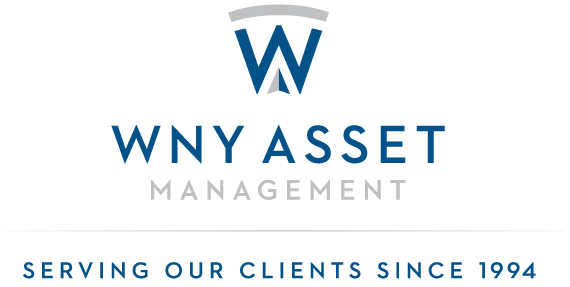
The SECURE 2.0 Act of 2022 is a law designed to substantially improve retirement savings options—including with 401(k)s and 403(b)s—in the U.S. It builds on the Setting Every Community Up for Retirement Enhancement (SECURE) Act of 2019. SECURE 2.0 was signed into law by President Joseph R. Biden on December 29, 2022, as part of the Consolidated Appropriations Act (CAA) of 2023.1
The SECURE 2.0 Act began as two pieces of legislation, one from the House of Representatives (H.R. 2954) and one from the U.S. Senate (S.1770).23 After both branches of Congress passed their respective bills, the consolidated legislation was included in the omnibus budget bill (the Consolidated Appropriations Act of 2023) as Division T (SECURE 2.0 Act of 2022).1
KEY TAKEAWAYS
- SECURE 2.0 Act of 2022, part of the Consolidated Appropriations Act (CAA) of 2023, builds on and expands the SECURE Act of 2019 to improve retirement-savings opportunities.
- The Act contains 92 new provisions to promote savings, boost incentives for businesses, and offer more flexibility to those saving for retirement.
- Provisions include automatic 401(k) enrollment, an increase in the age for taking RMDs, significant tax benefits for employers, and much more.
- The legislation in both chambers enjoyed broad bipartisan support.
SECURE 2.0 was something both chambers of Congress wanted to see become law; bipartisan support was woven into both versions of the bill. The 103 sponsors of H.R. 2954 consisted of 55 Democrats and 48 Republicans. On the Senate side, six Republicans and five Democrats were co-sponsors of S. 1770.45
The SECURE 2.0 Act attempts to accomplish three goals: Get people to save more for retirement, improve retirement rules, and lower the employer cost of setting up a retirement plan. Some provisions have already gone into effect (starting Jan. 1, 2023), while others will go into effect in 2024, 2025, and even later.
In pursuit of those goals, the new statute is packed with 92 retirement-savings provisions, including the following:6
Automatic Retirement Plan Enrollment
Beginning in 2025, SECURE 2.0, Section 101 requires employers to automatically enroll eligible employees in new 401(k) or 403(b) plans with a participation amount of at least 3% but no more than 10%. The contribution escalates at the rate of 1% per year up to a minimum of 10% and a maximum of 15%.7
Employers can encourage participation with small financial incentives. Employees can opt out of the plan if they wish. Small businesses (with 10 or fewer employees), new businesses (fewer than three years old), church plans, and government plans are exempted from the provision.7
Important: Existing 401(k) plans are not required to auto-enroll employees—just new plans.
New Required Minimum Distribution (RMDs) Rules
Under previous law, retirees had to begin taking required minimum distributions (RMDs) at age 72. SECURE 2.0, Section 107, increases the required minimum distribution age to 73, beginning on January 1, 2023—and to 75, beginning in 2033. Specifically, the RMD age increases to 73 for individuals turning 72 after Dec. 31, 2022, and before Jan. 1, 2033. It will increase to 75 for individuals turning 74 after Dec. 31, 2032.8
Section 302 reduces the excise tax—the penalty you pay—on failure to take an RMD from 50% to 25%. If the failure to take a required minimum distribution is corrected in a timely manner (as defined under SECURE 2.0), the excise tax on the failure is further reduced from 25% to 10%. The provision is effective for taxable years beginning after December 31, 2022.9
Section 325 eliminates the pre-death RMD for the owner of a Roth-designated account in an employer 401(k) or other retirement plan. Under current law, required minimum distributions are not required to begin prior to the death of the owner of a Roth IRA, although pre-death distributions are required in the case of the owner of a Roth-designated account in an employer retirement plan. This provision takes effect for taxable years beginning after December 31, 2023.10
Changes to Catch-Up Contribution Limits
Section 108 indexes the $1,000 catch-up contribution for savers age 50 and above to the IRS cost-of-living-adjustment (COLA). This provision is effective for taxable years beginning after December 31, 2023.8
Section 109 of SECURE 2.0 substantially increases catch-up limits for 401(k), 403(b), and 457 plan participants aged 60 to 63 to the greater of $10,000 or 150% of the “standard” catch-up amount for that year, beginning after December 31, 2024. For SIMPLE plans, the limit increases from $3,500 to $5,000, also indexed to inflation.8
Section 117 increases the annual deferral limit and the catch-up contribution at age 50 for SIMPLE IRA or 401(k) plans by 10% for employers with 25 or fewer employees. Employers with 26 to 100 employees are allowed to provide higher deferral limits if the employer provides a 4% matching contribution or a 3% employer contribution.11
Under Section 603 of SECURE 2.0, catch-up contributions by employees who make more than $145,000 per year (indexed to inflation), must be made with after-tax (Roth) dollars. This provision is effective after December 31, 2023.12
Expanded Access to Retirement Funds
SECURE 2.0 expands access to retirement savings in several ways:
- Section 115 permits participants to access up to $1,000 (once a year) from retirement savings for emergency personal or family expenses without paying the 10% early withdrawal penalties (starting Jan. 2, 2024).12
- Section 127 allows employees to set up a Roth emergency savings account with up to $2,500 per participant (starting Jan. 2, 2024).13
- Section 314 permits survivors of domestic abuse to withdraw the lesser of $10,000 or 50% of their retirement account without penalty (starting Jan. 2, 2024).14
- Section 331 lets victims of a natural disaster—if it is a qualified, federally declared disaster—withdraw up to $22,000 from their retirement account without penalty. The withdrawal is treated as gross income over three years without penalty (went into effect with passage of the bill).15
Increased QLAC Amount
Section 202 increases the amount individuals can move to a qualified longevity annuity contract (QLAC) from $125,000 to $200,000. It also adjusts the $200,000 limit annually for inflation and eliminates the rule capping QLAC premiums at 25% of the participant’s total plan assets. Some provisions of section 202 apply to QLACs purchased or received on or after July 2, 2014, others are effective as of the date the legislation became law.16
When Will Provisions of the SECURE 2.0 Act Take Effect?
That depends on the specific provision. Some take effect immediately, others begin in 2023, 2024, or even later. For example, automatic retirement plan enrollment doesn’t start until 2025, while the increase in age for RMDs from 72 to 73 begins Jan. 1, 2023.17
How Does the SECURE 2.0 Act of 2022 Impact When I Must Begin Taking RMDs?
Until passage of the Act you had to begin taking RMDs at age 72. SECURE 2.0, Section 107, increases the required minimum distribution age to 73 beginning January 1, 2023, and to 75 beginning in 2033.8
What Does SECURE 2.0 Have to Do With Social Security?
Almost nothing. One of the negatives about SECURE Act 2.0 is the fact it does nothing to solve the problem of the Social Security Trust Fund, expected to run out of money in just over a decade.18
The Bottom Line
Though cooperation between Republicans and Democrats in Congress remains at an all-time low, the SECURE 2.0 Act stands as one of the few pieces of legislation in which both sides could and did find common ground.
As comprehensive as SECURE 2.0 Act of 2022 is, the new law falls short by its failure to address Social Security shortfalls. That said, its provisions provide a number of routes to improvement in the percentage of Americans with any retirement savings plan. Should that come to pass, it will be a welcome development.
Article Sources:
Investopedia requires writers to use primary sources to support their work. These include white papers, government data, original reporting, and interviews with industry experts. We also reference original research from other reputable publishers where appropriate. You can learn more about the standards we follow in producing accurate, unbiased content in our editorial policy.
1. U.S. Congress. “H.R.2617 – Consolidated Appropriations Act, 2023.” 2. U.S. Congress. “S.1770 – Retirement Security and Savings Act of 2021: Summary.” 3. U.S. Congress. “H.R.2954 – Securing a Strong Retirement Act of 2021: Summary.” 4. U.S. Congress. “S.1770 – Retirement Security and Savings Act of 2021: Cosponsors.” 5. U.S. House. “H.R.2954 – Securing a Strong Retirement Act of 2021: Cosponsors.” 6. U.S. Senate, Committee on Finance. “SECURE 2.0 Act of 2022 Summary.” 7. U.S. Senate, Committee on Finance. “SECURE 2.0 Act of 2022 Summary,” Page 1. 8. U.S. Senate, Committee on Finance. “SECURE 2.0 Act of 2022 Summary,” Page 2. 9. U.S. Senate, Committee on Finance. “SECURE 2.0 Act of 2022 Summary,” Page 9. 10. U.S. Senate, Committee on Finance. “SECURE 2.0 Act of 2022 Summary,” Page 13. 11. U.S. Senate, Committee on Finance. “SECURE 2.0 Act of 2022 Summary,” Page 4. 12. U.S. Senate, Committee on Finance. “SECURE 2.0 Act of 2022 Summary,” Page 18. 13. U.S. Senate, Committee on Finance. “SECURE 2.0 Act of 2022 Summary,” Page 6. 14. U.S. Senate, Committee on Finance. “SECURE 2.0 Act of 2022 Summary,” Page 11. 15. U.S. Senate, Committee on Finance. “SECURE 2.0 Act of 2022 Summary,” Page 14. 16. U.S. Senate, Committee on Finance. “SECURE 2.0 Act of 2022 Summary,” Pages 7-8. 17. U.S. Senate, Committee on Finance. “SECURE 2.0 Act of 2022 Summary,” Pages 1, 2. 18. Social Security Administration. “Status of the Social Security and Medicare Programs: A Summary of the 2022 Annual Reports.”
IMPORTANT DISCLOSURES Broadridge Investor Communication Solutions, Inc. does not provide investment, tax, legal, or retirement advice or recommendations. The information presented here is not specific to any individual's personal circumstances. To the extent that this material concerns tax matters, it is not intended or written to be used, and cannot be used, by a taxpayer for the purpose of avoiding penalties that may be imposed by law. Each taxpayer should seek independent advice from a tax professional based on his or her individual circumstances. These materials are provided for general information and educational purposes based upon publicly available information from sources believed to be reliable — we cannot assure the accuracy or completeness of these materials. The information in these materials may change at any time and without notice.
Prepared by Broadridge Investor Communication Solutions, Inc. Copyright 2021.
